
This piece offers details about the reliability and validity of the Career State Inventory (CSI).

The Career State Inventory enables practitioners to evaluate career interventions.

Group coaching prepares students for the world of work they’ll be joining. It also enables colleges to deliver career services more efficiently by allowing a smaller number of career staff to provide rich learning experiences at scale.

Far from being at odds, career coaching and career advising are complementary. Each offers distinctive advantages to help students navigate their career trajectories.

Career services offices are often seen as places that offer help with resumes and run career fairs—but their impact beyond that is lost. Data can help pain a complete picture.

Third in a series of articles focused on the candidate experience, this article by Mary Scott addresses how execution, authenticity, and the candidate experience shape the employer’s campus brand.

Since taking office, the Trump administration has issued dozens of executive orders, many of which affect institutions of higher education and employers. The executive orders related to diversity, equity, and inclusion (DEI); immigration; and related policy changes are the most consequential in this regard.
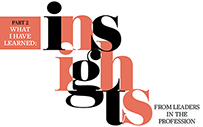
In the second of a two-part series, 13 NACE leaders offer their insight and guidance about what they have learned in their time in the profession.

Research findings underscore the need for organizations to invest in enhancing recruitment and retention strategies for Latinas in senior executive roles.
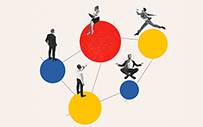
Career services professionals must prioritize teaching students how to build social capital and cultivate ties within their chosen career fields.

To compete in the job market, students must be able to connect their experiences to skills and communicate that to potential employers. Infusing skill development across campus can achieve that. Jill Donovan, Brookdale Community College, discusses how her career center began the process of integrating career readiness campus-wide.

The Lilly Ledbetter Fair Pay Act of 2009 and pay transparency laws enacted by a number of states are helping to advance equal pay for equal or similar work.
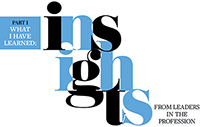
In the first of a two-part series, 13 NACE leaders offer their insight and guidance about what they have learned in their time in the profession.

Supporting arts students isn’t easy, but career services professionals can help students find industry-related information, identify mentors, highlight the transferable skills their crafts have given them, and expand their view of themselves.

As students of color, including Hispanic students, are eager to attend higher education institutions and advance their economic wealth, many barriers hinder their academic success.

Data suggest that providing interns with relocation assistance correlates to better conversion rates for organizations that hope to turn interns into full-time hires.

Review the evidence for the reliability and validity of the NACE Competency Assessment Tool. This article also offers brief context for the assessment tool, outlines the methodology employed, and provides the final, top-line results of the study.

Shifts in the educational space dictate the need to revisit, revise, and reframe traditional practices to be relevant to the needs of current students.

My staff wants to go above and beyond. Unfortunately, wanting something and having the resources to do it are two different things. Acting as if we have the resources is harmful to the very staff who want to provide exceptional services.

One important question for career services staff who hope to support racial equity in their work: How does race and racism show up in the student experience?

AI can support first-generation students in the job search by bridging the gap in their professional network.

On July 1, 2024, as part of its regulations around financial aid, the U.S. Department of Education released regulations that apply to all higher education Title IV participants—including a requirement that schools offer “adequate career services.”

Employers may use multiple avenues to screen potential candidates. These include 1) creating the job description, 2) creating the written application, 3) conducting the interview, 4) determining which background screening methods to use, and most recently, 5) navigating the use of artificial intelligence (AI). Each contains potential legal liability for the employer if not conducted correctly.

As the world of work continues to evolve, career development professionals must evolve their resources and services accordingly, based on the communities they serve. The school-to-work transition is common for both undergraduate and graduate students, but these two groups often have distinct career development needs, based on their identities, developmental stages, and life roles among other distinguishing characteristics. For colleges and universities to effectively promote the career success of their alumni, a customized approach will not only make services more accessible to graduate students, but more relevant as well.
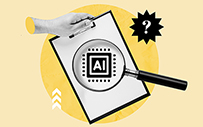
Career services professionals can help students use AI tools effectively and avoid common traps and mistakes.

Using AI in the preemployment process can increase objectivity but can also increase the risk of discriminating against candidates.
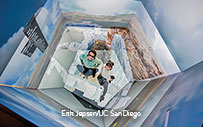
The UC San Diego Student Employment Program employs more than 6,000 students who work in more than 170 departments across campus.

Student employment can be a potent catalyst for transformative learning experiences, but is often relegated to the sidelines.

Results of a NACE quick poll identify barriers and accelerators affecting the career paths of career services and university recruiting professionals.

Providing a candidate experience that meets—or better yet, exceeds—students’ expectations is the “secret sauce” that drives successful results.

A pilot study conducted among cooperative education students at University of Cincinnati tested the value of providing students with flexible due dates to help them manage their mental well-being and grow their project management skills.

A former dean now working with hiring organizations offers five lessons for how higher ed can work with industry and move the needle for students—especially low-income and first-generation students.

Some have the mistaken idea that credit means internship experiences can’t or shouldn’t be paid. Affecting all students but especially those struggling with finances, unpaid, for-credit internships require the student to pay for the credit and forgo a paycheck. Employers can and should pay their interns, regardless of whether the student gets academic credit for participating.

A study found that mentorship, community, biculturalism, and resilience are crucial resources and skills that Black women can use to advance their careers.

Recent studies reveal that systemic barriers continue to limit progress on achieving pay equity for all, but there are tangible, proven ways that career centers and employers can make an impact.

In an ever-evolving landscape, career services needs to adapt and innovate. Here, Hassan Akmal discusses how career services can reimagine itself to meet the needs of students and alumni.

In this op ed piece, Chris Miciek discusses problems with jumping into AI without considering the consequences and urges we take the middle ground.
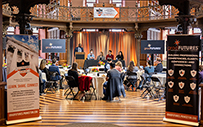
Evangeline “Eva” Kubu, Princeton University, explores how to address long-standing systems and practices to ensure all Ph.D. students have equitable access to comprehensive professional development.

NACE President & CEO Shawn VanDerziel shares NACE research, which indicates that both employers and college students and graduates view higher education and the college degree as valuable.

Due to their underrepresentation in the classroom and societal messaging around technology being a “masculine domain,” women in computer science often feel isolated and marginalized. A study demonstrates how women’s experiences in computing internships shape their future career decisions; the findings have implications for both career development professionals and employers who recruit entry-level talent.

On June 29, 2023, in Students for Fair Admissions, Inc. v. President and Fellows of Harvard College and Students for Fair Admissions, Inc. v. University of North Carolina, the U.S. Supreme Court struck down the affirmative action policies at Harvard College and the University of North Carolina. The court’s decision striking down race-based college and university admissions policies and programs will have sweeping and immediate consequences for higher education throughout the country.

The National Association of Colleges and Employers (NACE) polled its career services members in spring 2023 about their use of AI in their work and in their work with students.
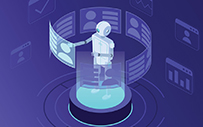
Automated video interviews (AVIs) are an emerging recruitment tool. As success factors in AVIs may differ from face-to-face interviews, it is important for career services practitioners to know how to help their students prepare for these new types of interviews.

The research suggests that, long term, we will likely work in and out of the office. Research from the National Association of Colleges and Employers shows that new college graduates want to be in person at least part of the time, but also want the flexibility to work remotely some of the time.

The Career & Professional Development office at the University of Denver developed a multipronged approach to work toward its ambitious goal to engage 90% of undergraduates annually.

The SPARK grant at Nazareth College is open to first- and second-year students to encourage and support early engagement in experiential learning.

The role of today’s primary role academic adviser is robust and multifaceted. Advisers must continually provide supportive outreach and engagement to address student interests, develop academic plans, and identify career paths from the time students first enroll throughout their college experience, and oftentimes, well past graduation.

A study at a minority-serving institution uncovers aspects of social and cultural capital that contribute to the college-to-career transition of Black undergraduate women.

At the University of Cincinnati, students facing financial constraints can access a grant designed to enable them to engage in career-focused courses.

Clarion University was part of a historic integration within the Pennsylvania State System of Higher Education (PASSHE). Since 2020, Clarion, California, and Edinboro Universities of Pennsylvania have worked to plan and execute the integration of their three unique, standalone universities to one shared model. As of July 1, 2022, we became Pennsylvania Western University (PennWest).

NACE’s research shows that career services has a quantifiable effect on students and their entry into the world of work. It’s hardly a new question: Over the years, many career services professionals have been asked to respond, often when budgets are tight and administrators are looking for where to make cuts, but even when that’s not the case.

As a career coach, I meet with both domestic and international students who are hoping to build their connections in a variety of industries. Many of our newer graduate programs in the Katz School of Science and Health can be completed in as little as 12 months, so there is a relatively short runway for these students to develop and cultivate their industry connections.

I’ll never forget my first experience at MEGACON Orlando, the largest pop culture convention in the southern United States, attended by more than 140,000 people annually. The hundreds of merchandise booths, once-in-a-lifetime meetups with celebrities, jaw-dropping character costumes, and all-day schedule of live entertainment kept the weekend packed with engaging experiences. The moments I remember most, however, came in smaller, more personalized packages:
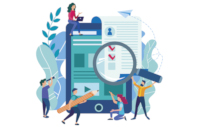
The H-1B is the most common work visa in the United States. Using the H-1B category, U.S. employers are permitted to hire international workers who have at least a four-year U.S. bachelor’s degree or the foreign equivalent, if the individual will work in a position requiring the type of degree that the graduate has.

Three members of NACE’s HBCU Affinity Group share their thoughts about and personal experiences with HBCUs.
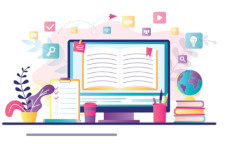
NACE provided a range of articles and resources around DEI-related topics throughout FY22.

News articles shout about the continuance of the “Great Resignation” or “Great Reshuffle” across all industries. As of July 2022, the U.S. Department of Labor (DOL) reported that quit rates (individuals voluntarily separating from their organization) continue to hold steady in the field of education, with more than half a million exits since the beginning of 2022.

A study of computer science and engineering students at the University of Georgia examines their experiences with and perceptions of work-related experiential activities.

New to the repository is “Curated Resources for Teaching and Assessing Career Readiness Competencies,” a compendium developed through a grassroots effort by NACE members. Access this and other resources at www.naceweb.org/career-readiness/resources/ .

There is a seemingly endless supply of tools and tips for helping the undeclared student figure out what they want to do with their life. This process is difficult for students, challenging them to develop self-awareness alongside visions for the future.

Economic uncertainty often causes employers to amend their expectations of new hires. The 2008 economic recession and the unexpected events of COVID-19 are two examples where mindsets around recruiting shifted, and the entry-level employment landscape yielded unexpected results.

The effective preparation of college students for careers is an important college outcome. Yet, employers and the public increasingly feel that universities are not doing enough to prepare students for the workforce

It seems like you don’t have to look far to find criticism regarding the value of a college degree. In fact, some critics (and graduates who are riddled with heavy student loan debt) are recommending a harkening back to vocationally focused education

There are two types of people in the world of career services: people who know about JLD and those who have not heard about it yet. It is a tad obscure and vague; however, it can have a significant impact on a student’s educational journey and pathway to career success.

Over time, cooperative education (also referred to as co-op/co-ops) has gained wide adoption in practice. Although the term “cooperative education” is used at many institutions, no generally accepted definition for this type of experiential education for higher education students exists. Co-op programs vary greatly in myriad ways.

Internships provide employers an opportunity to identify talent early: Indeed, according to NACE’s 2019 Recruiting Benchmark Survey Report, nearly all respondents (94 percent) said it was very or extremely important to identify talent early through internships.1

With no additional budget, Clarion’s Center for Career and Professional Development built and implemented a mentor program for students.

Rhonda Fisher Eaker and Alyssa Marks, Metropolitan State University of Denver, look at the effects of funding students for internships in fields where internships are traditionally unpaid.

Historically, employers conducted preemployment drug testing to promote a drug-free work environment and safe working conditions for all employees. Applicants who tested positive for prohibited substances, including marijuana, were generally excluded from further consideration for employment. However, as more states legalize the use of medicinal or recreational marijuana, employers are facing difficult decisions regarding their preemployment drug testing policies.

The Center for Career Development at the University of Charleston is working to engage employers by transforming transactions into relationships.

Students’ expectations around authenticity in recruiting have remained constant, but the pandemic created job-search challenges that affect how they assess employers and their opportunities.

At the University of South Carolina, career services is working to make career readiness and employability everyone’s responsibility with its career champions program.

Career success means a commitment to lifelong learning to add skills and credentials that employers need. The adaptive innovator—or T-professional—does just that.

A study conducted at Ohio University shows the power and potential of machine learning to predict and influence employment at graduation.

Through its University Professional Internship and Co-op Program, Clemson University provides 1,000 students a year with the opportunity to gain experience, defray expenses, and build career readiness competencies.

This article discusses maintaining and handling protected data, including how to an internal or third-party breach.

The “wandering map,” a variation on the mind map, encourages students to explore their lives on paper.

The coaching movement addresses the student as an equal partner, empowering them to close the gap between where they are and where they want to be.

Five years ago, Rutgers University – New Brunswick adopted the career cluster model. How is it working? How has it evolved?

At the University of Nevada, Reno the career center became the Career Studio, where students never need an appointment. All career advising is done by undergraduate students; the professional team focuses on all other aspects of career development.

NACE looks at how two universities brought career readiness competencies to their campus.
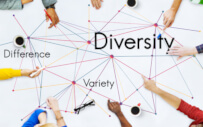
Career centers play a critical role in supporting diversity, equity, and inclusion.

At Princeton University, career services is reimagined along the themes of purpose and meaningful work.

Assistant and associate directors have one foot in vision and strategy and the other in day-to-day operations. How do these professionals excel as middle managers?

Using data from NACE’s 2016 Student Survey, NACE research looks at factors that may influence the job success of first-generation students.

The current drive to better understand and anticipate the future of career services may be distinctive in that it is influenced by certain environmental factors that threaten a potential sea change in higher education.
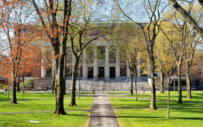
Given the increased attention to career outcomes from both government and university administrations, one would expect a significant commitment on the part of the university to the career services office. This commitment could be measured in terms of critical resources expressed as either added dollars or increased personnel to handle the increasing difficulty of counseling students to succeed in a depressed job market. Using data from two installments of NACE’s annual Career Services Benchmark Survey for Colleges and Universities (2007 and 2014), this article examines the strength of that commitment.

Successful strategies for converting interns into full-time hires. As the job market continues to improve, employers continue to look first within their internship programs for entry-level college hires.

Appreciative inquiry is a positive, solution-focused approach to problem solving and is sometimes labeled appreciative coaching, appreciative advising, and appreciative living. These labels tend to reflect the population served: Appreciative inquiry focuses primarily on organizations, while the other terms apply more to work with individuals.

A common mistake many companies make when building a university recruiting (UR) program is to focus on identifying core schools first. While this is a critical task, it’s not one of the first steps to tackle, especially if you need to build a university recruiting program when funds are low. Many companies have tightened their belts in recent years, so UR professionals must be creative with limited resources and human capital; it’s all about delivering more with less. As such, your first order of business should be to look inside instead of outward.

Given the complexity and variety of laws, it is not surprising that employers, applicants, and career services professionals alike are confused about what is and isn’t legal in the case of marijuana—medical and recreational. This article addresses marijuana use as it pertains to some of the most pressing questions surrounding recruiting and hiring.

Employers are looking for help to attract and retain Black talent. Career services professionals can help them by sharing 16 strategies that will help them.

The internet is full of advice on how international students can lower the costs of their own education, but individual students aren’t going to solve this problem on their own through a personalized, piecemeal approach. Collective action is necessary. Stakeholders from the educational sector, financial world, and the business community must work together to create a unified system that works.

Many colleges are placing a renewed emphasis on recruiting rural students. Are career centers prepared to help them when they get there?

First-generation have unique career development needs that career services can address.

Research surfaced a number of insights about the nature of undecided and declared students in the arts and sciences and what unique and distinct barriers they face in engaging with career education.

What makes undecided students tick? Two professors at University of Cincinnati evaluated a group of undecided students to find out and developed recommendations to support students who don’t want to be pinned down.

College students who identify as lesbian, gay, bisexual, transgender, or queer (LGBTQ) experience unique challenges in the area of career preparation.

In comparing both the first destinations and the lifelong professional outcomes for women and men, there are some notable disparities, including in pay. What part can higher ed play in eliminating the gender pay gap?

The College Scorecard limits post-graduate information to salary for the school as a whole. In this article, NACE's research director looks at how three factors—type of school, demographics, and academic program—affect salary results.

The Office of Career and Continuing Education at Florida Southern College developed and implemented the “Diversity in the Workplace” series to address student needs.

NACE research suggests that internship and study-abroad experiences have a positive effect on the career readiness of first-generation students

The authors explore soft-skill development through internships.

The authors look at the similarities and differences in how college students and employers describe leadership and its various proficiency levels.

An escape room at Ball State University helps build critical thinking and problem-solving skills and competencies in students.

Peck and Preston advance the Cocurricular Career Connections (C3) Leadership Model, designed to connect higher education and business and industry.

Employers that want to attract and retain the best employees should focus on engaged students.

Since the success of career readiness plays out in the classroom, faculty need to drive implementation of the career readiness competencies.

A cross-functional team led by faculty integrated career readiness into the College of Liberal Arts at University of Minnesota-Twin Cities.

Highlights from the NACE19 mega-session offer insight into how to make excellence inclusive.

The NACE Center and SkillSurvey collaborated on a pilot project to determine how to best measure career readiness; results of the initial phase are highlighted.

Systemic reform centered on active learning is essential to cultivate career competencies.

This is the time to marry two potent forces in higher education—college to career readiness and systematic focus on shared institutional outcomes. Career services has much to offer as the whole campus aligns to assure that students graduate with experiences and credentials that reflect genuine capacities that will serve them well in securing work with solid prospects and lives of meaning and agency.

In spring 2014, the National Association for Campus Activities (NACA) and NIRSA: Leaders in Collegiate Recreation launched a working group to look at how the soft skills gained through participation and employment in co-curricular experiences helped to prepare students for their careers. The goal was to identify ways that students are gaining skills that make them more desirable to employers by participating in programs in collegiate recreation and campus activities and by engaging in student employment in the fields of collegiate recreation and campus activities.

There are potential benefits to using artificial intelligence (AI) in the recruitment and screening of job applicants and in the hiring process, but there are also legal ramifications that must be understood prior to implementing any AI hiring system.

The U.S. Department of Labor allocates billions of dollars annually to support education and career development activities. Federally financed career development services is guaranteed and ongoing funding mandated by WIOA is potentially available to all college and university career centers. This article explores how Ohlone College’s career center tapped federal funds to help finance career services for its students.

Using before and after assessments, career coaches at the University of Cincinnati analyze the outcomes of their course for undergraduate business students and identify future directions based on the data.

By encouraging students to engage in real-world problems using the Challenge Method, career professionals can help students take tangible steps toward career decision-making and planning.

Attorneys George Hlavac and Edward Easterly discuss potential pitfalls in the application and interview for applicants and employers.
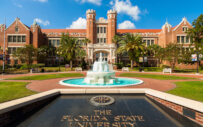
In summer 2019, Florida State University implemented an experiential education graduation requirement for all undergraduate students.

Unpaid internships can put international students at risk of violating their immigration status.

On January 1, 2020, millions of people became eligible for overtime. It is imperative that employers and employees understand the new overtime rules and requirements going forward.

Interns should be are aware of the law and understand what remedies are available should they believe they are being subjected to harassment in the workplace during their internship.

What constitutes harassment? How are employers required to respond? What should employees do if they believe they are being harassed? Are unpaid interns protected?

Employers may require new hires and interns to sign restrictive covenants, such as noncompete, nonsolicitation, and/or nondisclosure agreements. Attorneys George Hlavac and Ed Easterly discuss the issues.

Legal issues and questions around preemployment testing range from when a test is appropriate to how to conduct a test to how an employer can and should use the results.

Immigration attorneys review H-1B visas, changes that have impacted the H-1B program, and proposed legislation that may further impact H-1Bs.

For talent acquisition, given its emerging technology-intensive ecosystem, is what role does human interaction appropriately play? Where is the humanity in the technology of talent acquisition?

A nationwide survey of more than 500 college seniors and recent graduates found that those who engaged in cold networking were twice as likely to get an internship.

Fatim Lelenta, NYU, discusses strategies for supporting the personal and professional development of counselors-in-training.

Attorney Edward Easterly addresses some of the key legal questions that have arisen in regard to the coronavirus pandemic for career services, employers, and new college graduates and interns.

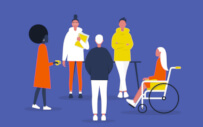
Most organizations should look to address is their cultural landscape and homogenous culture. Senior leaders and recruiters can consider these 10 concrete ideas and practices that could positively impact creating an inclusive workplace and environment.

Many career centers have approached career education as instruction into a presentation of who our students are on the outside. We can change the angle from which we see things and get students to believe and have a renewed faith in themselves.

NACE research shows that paid internships benefit students in their initial post-graduation job search: more job offers, higher starting salaries, and a shorter search. However, the data also show that this path to employment may be exclusive, with racial/ethnic minorities, women, and first-generation students all underrepresented in paid internships.

The terms “resiliency” and “wellness” are employed in many settings, but how do they impact and what do they mean to our students applying to jobs, internships, and graduate programs, while surviving a global pandemic?

There are benefits to engaging with a mentor with whom you do not share an identity.

Philip Wilkerson, III and Samara Reynolds, authors of “The Value of Intentional Cross-Identity Mentorship,” share their personal insights about mentorship.
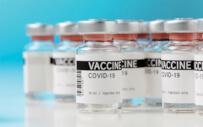
Can an employer mandate that its employees (or interns) obtain the vaccination? The answer, not surprisingly, is not a simple “yes” or “no.” The ADA as well as other laws and regulations play a role in determining what, legally, an employer can mandate.
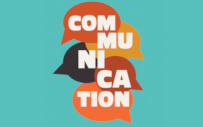
Research conducted by Aaron James and Troy Nunamaker, Clemson University, indicates that many students under- or overrate their communication skills, perhaps because they are assessing them in the context of an academic setting, not the workplace.

By intentionally blending appreciative advising and brain-based career development, career services professionals can better serve students.

College students with disabilities struggle to launch their careers. Strategic partnerships can help reduce barriers and increase opportunities.

There are differences and similarities in the attributes employers seek when deciding between two qualified candidates for a full-time job and for an internship or co-op.

Qualitative research conducted with 12 markedly different colleges and universities identifies the factors that led to the elevation of the career services operation.

Can employers mandate employees and interns to be vaccinated against COVID-19? Can job candidates be asked if they are vaccinated? This article address five common questions about the COVID-19 vaccine as it relates to hiring and employment.

Career services professionals have been wrestling with helping students pursue work that provides meaning and allows them to make an impact. Career services professionals can benefit from a calling-centered approach to career coaching.

Amy Morrill Bijeau and Beverly Peters, American University, examine whether students can gain career readiness competencies through virtual internships. Their study compared student self-assessments and supervisor evaluations from those taking part in virtual, in person, and hybrid internship experiences.

To understand faculty activity and attitudes about preparing students for post-degree employment, the authors surveyed faculty and found that are willing allies.

Research shows a greater number of career services units are moving away from their traditional homes in student affairs divisions; this article explores the root causes behind the trend and uses the University of California, Irvine to illustrate what this shift might mean for universities exploring career services realignments on their campuses.

Sandra Buatti-Ramos offers a look at some of the bigger issues trans college students face in their job search and in the workplace; the goal is to provide career services professionals with insights that can help them think about how they can support their trans students in their career decision-making, job search, and career management.

It is critical that administrators and staff at colleges and universities foster an environment of inclusion and belonging for international students; for career development professionals in particular, this means making it clear to international students that their career development matters. One of the best ways to do this is by building a strong partnership between the career center and international student services.

Students with disabilities face a number of barriers to successful employment, but tend to underuse career services. The authors address options and opportunities for career services to address underuse and help their students overcome obstacles and challenges.

The legalization of recreational and/or medical marijuana in many states raises a series of issues for employers and employees alike. How are drug testing policies affected? Must employers accommodate use of marijuana for medical purposes? What does legalization mean for federal contractors?

To implement and foster an inclusive climate in higher ed, institutions need to create a culture of belonging, attract diverse talent at the entry level, and build intentional pathways to retain diverse talent.

Is experiential learning designed for Black students? Erica Lake’s study found that that Black students at PWIs perceive different college experiences from their peers and are not as engaged in experiential learning, even though they may be interested

Career center staff should vet job postings as thoroughly as possible before posting them to avoid posts that are fraudulent or discriminatory.

The key for reference providers is to know what information should and can be disclosed, and what legal ramifications arise as a result of improper disclosures.

Undergraduate research, scholarship, and creative inquiry experiences can help students build competencies in all eight NACE career readiness competencies.

One way to address career preparation is by ingraining it into the curriculum with the help of faculty champions.

A survey of 300 first-generation college students identified three skill sets that these students need for career success: relationship management; virtual work; and leadership skills.

There are a number of laws and regulations governing internships, including whether an intern is classified as an employee. Others cover compensation-related issues—including whether an intern can be paid if they receive credit—workplace safety, employment agreements, and more.

Many career services professionals are asked to prescreen candidates for employers—to identify their “best” students. So, too, are faculty members. Beyond a host of ethical issues involved in such a request, there are legal implications.

Given the ever-changing nature of employment laws, it is important to understand what is permissible in diversity hiring and recruiting.

In this look forward, Shawn VanDerziel, executive director of the National Association of Colleges and Employers, addresses disruptions to our professional lives and the opportunities these present for redefining how college career services and employment professionals operate.
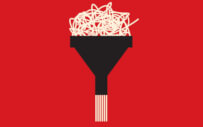
Career work is transformational, not transactional. If an institution clings to the severely outdated myth that universities should " place" students through their career centers, student learning, as well as critical connections with stakeholders, can be lost.

College and university career services practitioners should continuously search for, review, and consider implementing practices that have proven successful in the service of trans students. This article serves as an introduction to successful practices.

Research indicates that there are detrimental effects for on hiring for students graduating during a recession from a less-selective university.

Over the next few years, $7.4 billion will be spent to bolster the underfunded, understaffed local, state, tribal, and territorial health departments around the United States. As a result, there are new career opportunities for every major and degree level, ranging from associate degree graduates to Ph.D.s.

Employers use background checks to determine if an individual is suitable for a position within the organization. Recently, however, employers have been running into significant roadblocks in the use and application of background checks, and some are now being challenged in the courts for conducting background checks on potential applicants.

What materials on the Internet are copyrighted and can you repost them? This article discusses copyright online and issues surrounding it.

Employers need to know how to determine if an international student will require visa sponsorship—and career services professionals also should be aware of this process so that they can effectively advise these students.

Identify faculty partners willing to work collaboratively with the career services office in a partnership to promote student success, including reaching their personal, academic, and professional goals.